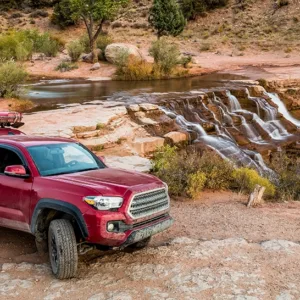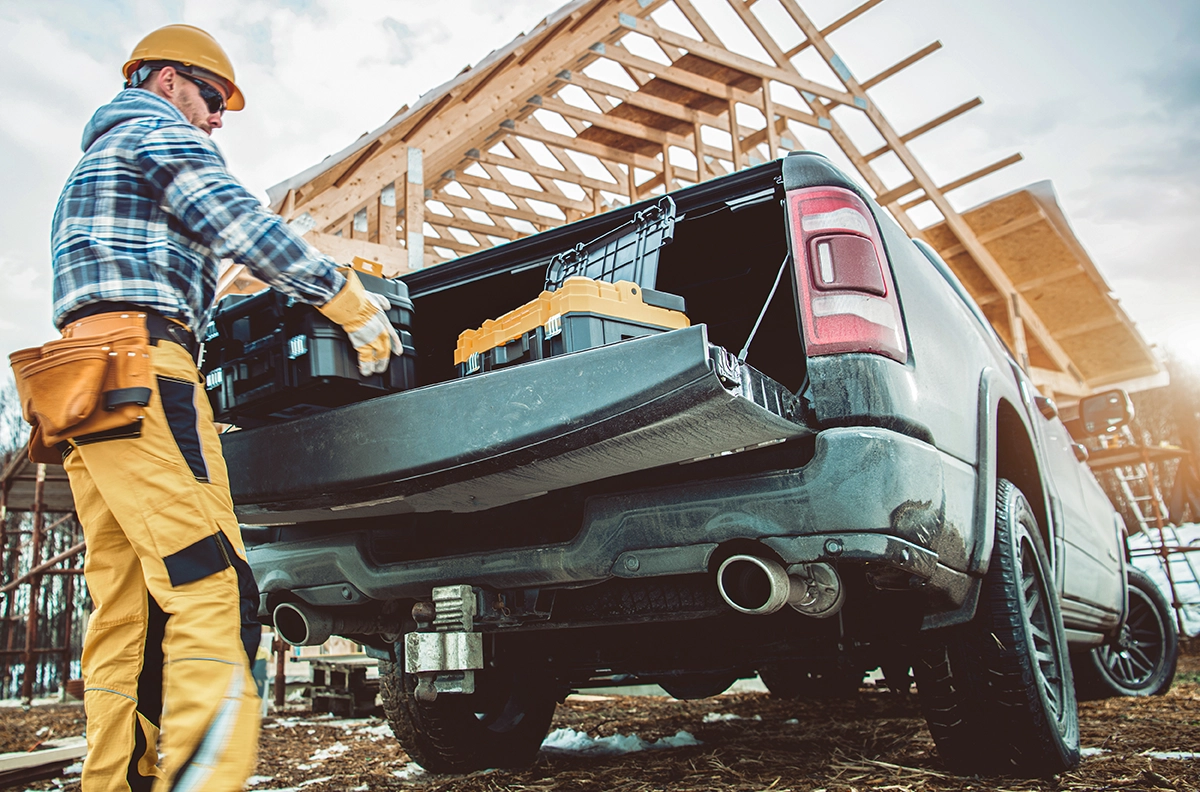
When it comes to hauling heavy gear, payload capacity is one of the most important specs to understand about your truck. Whether you’re transporting construction materials, worksite equipment, or everyday cargo, knowing your vehicle’s limits can mean the difference between safe, efficient hauling and costly repairs—or even accidents. The good news is that there are also safe and practical ways to maximize truck payload capacity.
In this guide, we explain why payload capacity matters, how to calculate it, and share expert tips for maximizing your truck’s hauling performance.
Jump ahead to:
What Is Truck Payload Capacity?
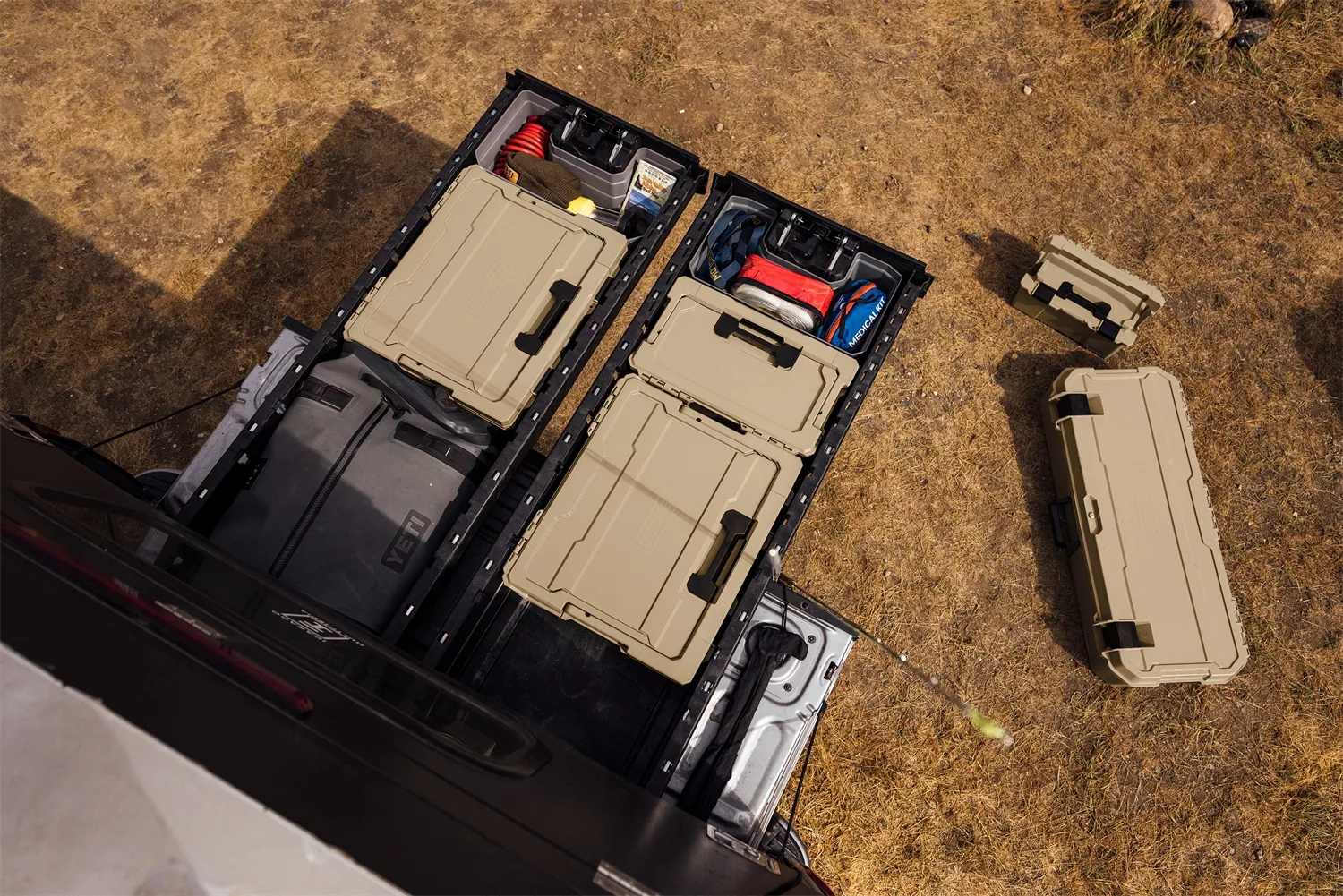
Before you start looking for ways to maximize how much weight your truck can carry, it’s important to understand exactly what payload capacity means. Payload capacity is the maximum amount of weight your truck can safely carry in the cab and bed combined. This includes both cargo and passengers.
However, it’s also important to remember that payload capacity does not include anything your truck tows behind it.
Payload Capacity vs. Towing Capacity
While payload capacity refers to the weight your truck can carry, towing capacity is how much it can haul—whether that’s a boat, trailer, or anything else you’re towing.
Towing capacity is usually much higher than payload capacity, since a trailer helps distribute the weight more evenly.
Common Truck Ratings Explained
It’s easy to confuse all the different truck ratings, so here’s a quick breakdown:
| Payload Capacity Terms | Definitions |
|---|---|
| Payload Capacity | The maximum weight a truck can carry in both the cabin and the bed |
| Gross Vehicle Weight Rating (GVWR) | The most weight a truck can carry, including its own weight |
| Curb Weight | The truck’s weight without cargo or passengers (includes necessary fluids) |
| Dry Weight | The truck’s total weight, excluding cargo and fluids |
Why Does Truck Payload Capacity Matter?
- Safety: Carrying more weight than your truck is designed to handle can be a serious safety risk. It makes it much harder to stay in control and can even lead to severe vehicle damage. Staying under your truck’s payload capacity keeps you and others on the road safer.
- Vehicle longevity: Overloading puts extra stress on the suspension, tires, and brakes, resulting in more costly repairs and a shorter overall lifespan for your truck.
- Efficiency: The less weight your truck carries, the less engine power it requires to move. Adhering to payload capacity allows your engine to work in its most efficient range, so you don’t waste fuel.
- Compliance: Depending on your state, you may face legal penalties if you go over your truck’s payload capacity.
How to Calculate Payload Capacity
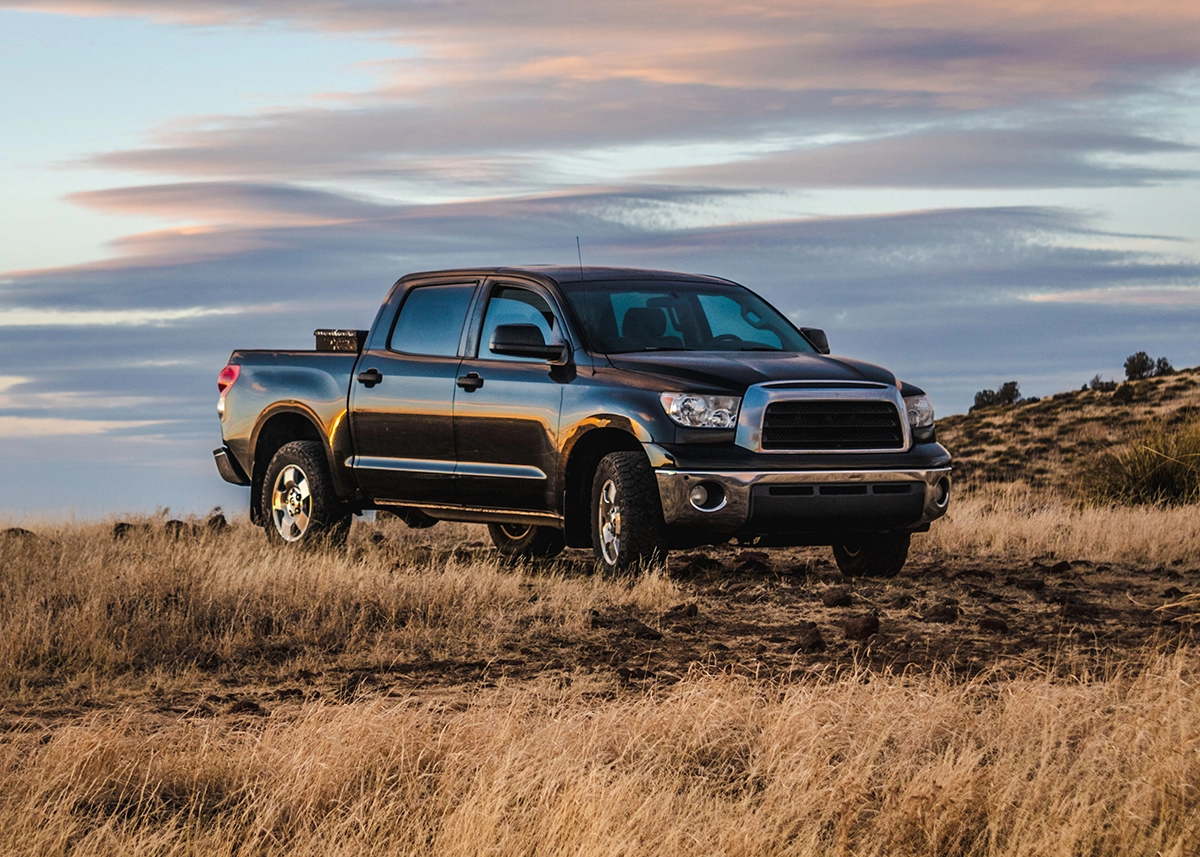
Checking the owner’s manual is the most reliable way to determine payload capacity. Sometimes you can also find the number on your truck’s door jamb sticker, or the values you need to calculate it, which are: GVWR and curb weight.
Payload Capacity Calculation
Use this equation to calculate your truck’s payload capacity:
Gross Vehicle Weight Rating (GVWR) – Curb Weight = Payload Capacity
For example, if GVWR is 10,000 lbs. and curb weight is 6,000 lbs., your truck’s payload capacity would be 4,000 lbs. (10,000 – 4,000 = 13,000).
That would mean you, your passengers, and your cargo must add up to less than 4,000 lbs.
Even after you’ve determined your truck’s payload capacity, the equation doesn’t end there. Just because your vehicle can technically handle that limit doesn’t mean it’s safe to load it up at 100% capacity. This is where the 80% payload rule comes into play.
The 80% Rule for Payload Capacity
A good rule of thumb is to never exceed 80% of your truck’s payload capacity. This gives you a buffer range that factors in potential miscalculations, so it’s less likely that you accidentally exceed the limit.
Following the example above, for a payload capacity of 4,000 lbs., you may want to consider keeping the load under 3,200 lbs. to be safe.
How to Maximize Truck Payload Capacity
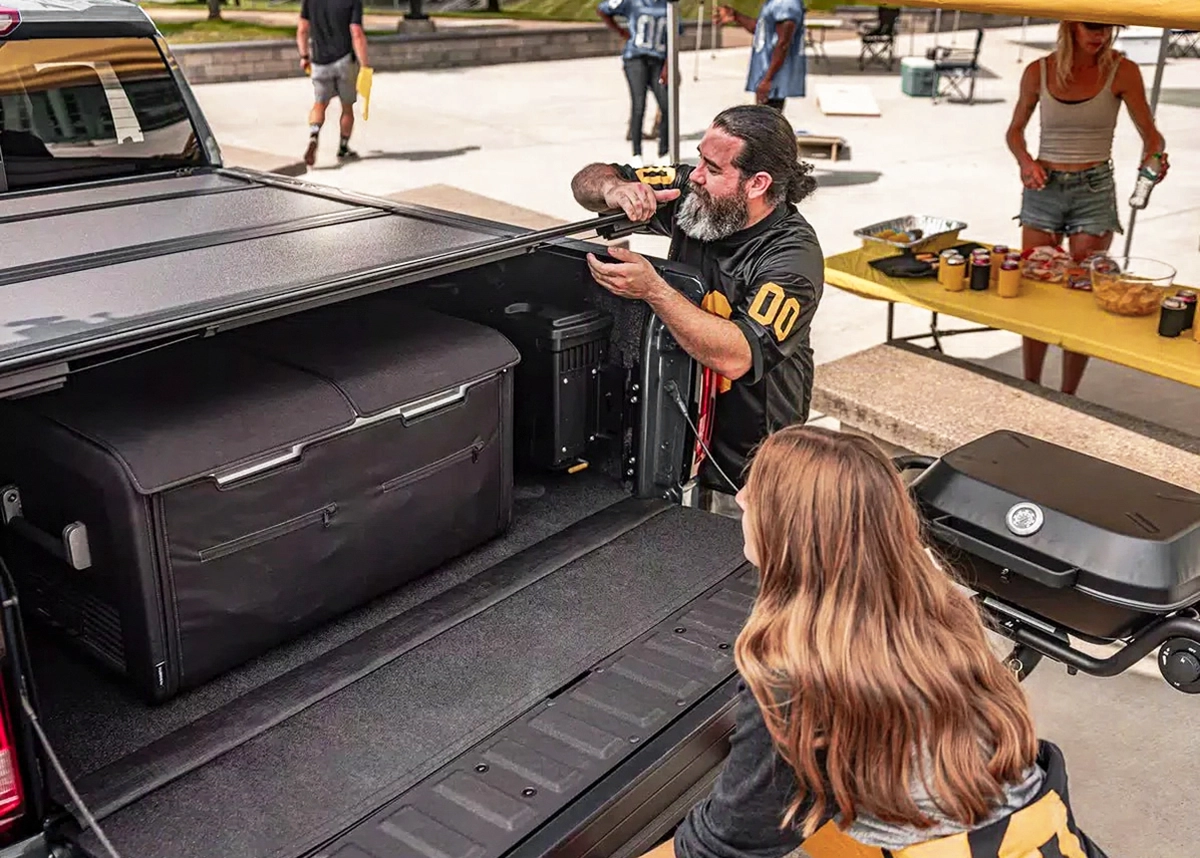
It’s never a good idea to exceed your truck’s payload capacity. Heavy loads can put a decent strain on your engine, even if you’re staying under capacity. While upgrading to a heavy-duty radiator can help prevent overheating for larger hauls, a project that big isn’t always feasible.
Fortunately, there are lots of simple ways to improve your truck’s performance and hauling capabilities. Below are some strategies to maximize your truck’s payload capacity:
Upgrade the Suspension System
One way to maximize your truck’s payload capacity is by reinforcing the suspension. The suspension is designed to absorb weight and road impact, but stock systems are often built for comfort and general use—not heavy-duty hauling. By upgrading key suspension components, you can better support heavier loads while maintaining stability and control.
It’s important to remember that suspension upgrades won’t change your manufacturer’s official payload rating. However, they do reduce strain on your truck, improve handling, and allow you to carry heavier loads more safely. Always pair suspension improvements with proper weight distribution for the best results.
Upgrade Your Tires
Carrying heavy loads in your truck bed can put a significant strain on your tires. Upgrading to tires with a high load rating can help you maximize your overall payload capacity.
Here’s a table to help you choose a tire type for your payload needs:
| Tire Type | Typical Use | Description |
|---|---|---|
| Highway tires | On-road use | Designed to maintain stability for heavier loads, even at highway speeds |
| Mud tires (M/T) | Heavy off-road use | Built for rugged terrain with high load capacity; may be less efficient on the road |
| All-terrain tires (A/T) | Mix of on-road and light off-road use | Balanced payload capacity and off-road traction |
Install Suspension Airbags
Suspension airbags, also known as air springs, are cushions you can add to your truck to improve its suspension. They are essentially rubber or polyurethane bags filled with pressurized air, which help absorb road shocks and vibrations.
Again, while suspension airbags can’t alter payload capacity, they do help your truck manage its weight better, keeping it more level, stable, and easy to handle.
Install a Tonneau Cover
Efficiency is a top priority when your truck is carrying heavy loads. While nothing can directly increase payload capacity, a tonneau cover can help maximize efficiency by covering your open truck bed, streamlining airflow over your vehicle for less drag on the road. This helps improve handling and stability and reduce fuel consumption.
Upgrade Your Brakes
The heavier the cargo, the harder your truck brakes have to work. For more intense payloads, factory brakes might struggle under the added stress. This can wear them down and create longer stopping distances.
Upgrading your brakes can give you better control and improved safety when you’re carrying heavier payloads.
Keep Up with Maintenance
Even the best upgrades won’t do anything to maximize your payload capacity if your truck isn’t running properly. Keeping up with routine maintenance and repairs is essential if you want to keep your rig safe, efficient, and capable of handling heavy payloads long-term.
Remember to check tire pressure, suspension components, and fluid levels regularly, or any time you’re about to head out with heavy cargo.
Find the Best Truck Accessories for Maximizing Performance
Your truck is tough, but so are heavy payloads. To ease the stress of hefty hauls on your vehicle, you’ll need the right accessories to maximize efficiency and performance.
Since 1970, Campway’s has been the West Coast’s leading retailer of premium truck accessories. From air suspension kits to tonneau covers and more, we’ve got everything you need to turn your truck into a hauling powerhouse.
Shop our selection of industry-leading truck accessories online for in-store pickup, or stop by one of our locations to browse our products in person.



